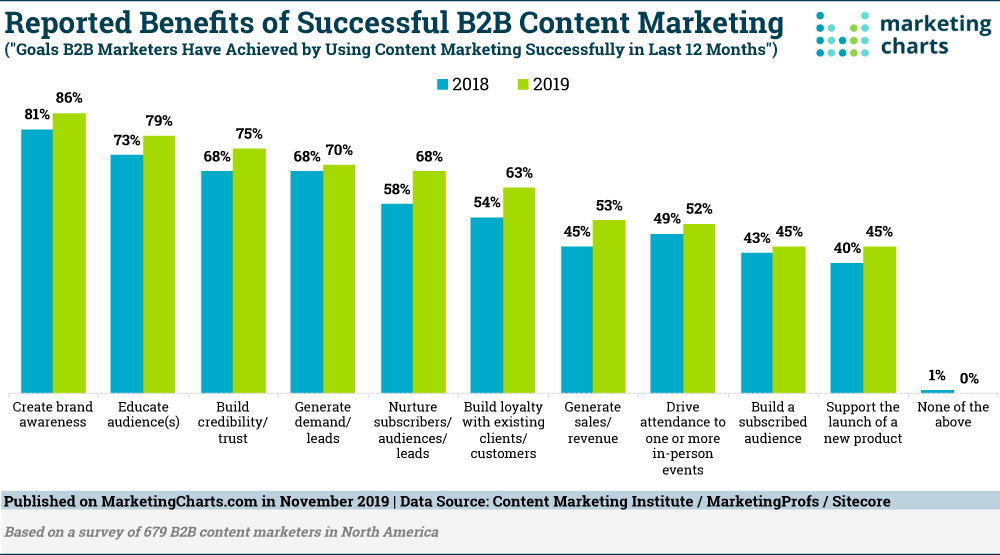If you’re selling B2B or wholesale online, you should have an Ecommerce social media strategy activated. But if you don’t, or aren’t sure whether what you’re doing is the right approach, this how to get started guide should help you get organized.
We’ll start out by talking about the main goals to achieve with social media, and then discuss some steps you can take to organize and deploy a strong social media approach, especially how it can link to other content marketing initiatives.
Goals for Ecommerce Social Media
Social media may seen a poor fit for B2B businesses on the surface, but the reality is your buyers use social media just as anyone else does, even if their primary purpose isn’t for B2B information or communication. Your customers are likely to have Facebook, Twitter or Instagram accounts to go along with the more expected business options like LinkedIn.
So, you can still communicate with your buyers and potential buyers on platforms that aren’t designed primarily for B2B. But what should you be accomplishing with Ecommerce social media?

Social media can help accomplish a variety of goals. A survey of B2B marketers determined that their top priorities include:
- Create brand awareness
- Educate audiences
- Build credibility/trust
- Generate demand/leads
- Nurture subscribers/audiences/leads
- Build loyalty with existing clients/customers
That’s quite a bit of heavy lifting for social media to accomplish! But with the right approach, it can do all of this and more.
Getting Started with Ecommerce Social Media
Once you know what you want to accomplish with your social media, it’s time to get down to building an executing a plan of attack. Here are elements to work through as you do.
1. Develop a Content Plan and Calendar
There are two halves to getting things rolling. One is to get organized about what you’re going to post; the other is how often you’ll post. To some degree, the types of content you’ll have, and how often you can have new content to share, may influence your social media scheduling.
Your calendar will likely pick up steam as the variety of content you have available grows. You’ll be able to share both newly created content and pieces from the archives that maintain relevancy.
2. Pick Your Platforms
There’s a lot of social media platforms out there, and trying to manage them all, especially for smaller businesses, could be tough. It can help to identify which platforms will be best for your business. Things under consideration can include:
- Where you talk to your customers today
- What types of goals you have set
- Your proficiency with given platforms
- Whether you have content that fits that format
- Your team’s internal strengths (or partners that are helping you)
For instance, some marketers are experimenting with TikTok, but that is a video-heavy, more creative platform than, say, LinkedIn. So knowing what you can accomplish with your resources will help ID where to begin. Over time, you can certainly expand the platforms you’re leveraging.
3. Select Your Content Types
B2B Ecommerce marketing has a lot of well-established types of content that can drive interest and generate leads. These include:
- Downloadables like eBooks and white papers
- Invitations to physical events and virtual webinars
- Free trials or demos as a lead generation service
- Case studies and testimonials
- Blog content around your industry
- Marketing messages around sales/new products/closeouts
- Product education posts
That’s just a sampling of ways you can get attention and drive interactivity on your social media profiles. Each has its own requirements to build a strategy to create materials that can be leveraged for social media.
4. Don’t Forget Images/Video
While various post types can thrive on specific types of social media, images and (increasingly) video see higher rates of interest. Facebook posts with images get more interactivity than those without, results which is replicated on LinkedIn, Twitter and even blogs.
Video performs even more strongly. 72% of people want to learn about products via video, and 95% of viewers retain knowledge better than through reading.
Videos can take a variety of forms including:
- Product information
- Company updates
- Customer testimonials (pairs well with the case study)
Leverage Ecommerce Social Media to Success
With a bit of planning and organization, you can get your B2B Ecommerce business on a helpful path by leveraging Ecommerce social media.
If you’re still working to establish your B2B Ecommerce business online, or are ready to take the next step forward, contact Zoey to get your demo of our powerful self-service and salesperson-driven Ecommerce solutions:





